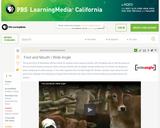
In this Wide Angle video, learn about the outbreak of foot-and-mouth disease in cattle in Botswana.
- Subject:
- Education
- Material Type:
- Lecture
- Provider:
- PBS LearningMedia
- Provider Set:
- Teachers' Domain
- Date Added:
- 08/22/2008

In this Wide Angle video, learn about the outbreak of foot-and-mouth disease in cattle in Botswana.
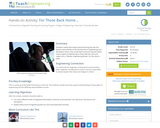
Students review information learned during the past five lessons and activities of the Introduction to Engineering unit. Working in teams, they create flyers and short quizzes about various types of engineering to share with the class and collect into a "Olympic Engineering Binder" for the class to keep.
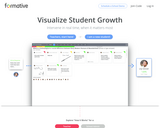
Formative is a formative assessment tool that allows teachers to create assessment for students in which they can type, show their work with drawings or submit images.
It allows teachers to provide frequent formal and informal checks for understanding guarantee student growth as well as know exactly what each student needs as they learn and take immediate actions
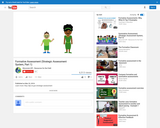
Educators use formative assessment to continually reflect and improve their skills related to these practices. The Formative Assessment video is a resource that can be used to support educators' professional development related to assessment literacy. Use the Video Supplement & Resource Guide to enhance your facilitation of this professional development opportunity.
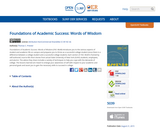
Foundations of Academic Success: Words of Wisdom (FAS: WoW) introduces you to the various aspects of student and academic life on campus and prepares you to thrive as a successful college student (since there is a difference between a college student and a successful college student). Each section of FAS: WoW is framed by self-authored, true-to-life short stories from actual State University of New York (SUNY) students, employees, and alumni. The advice they share includes a variety of techniques to help you cope with the demands of college. The lessons learned are meant to enlarge your awareness of self with respect to your academic and personal goals and assist you to gain the necessary skills to succeed in college.
Table of Contents:
Part One: YOUR Solid Foundation
The Student Experience by Kristen Mruk
Practice, Practice, Practice by Dr. Kristine Duffy
Why So Many Questions? by Fatima Rodriguez Johnson
These Are the Best Years of Your Life by Sara Vacin
With a Little Help from My Friends by Paulo Fernandes
Part Two: YOU Are the President and CEO of YOU
Can You Listen to Yourself? by Yuki Sasao
Failure Is Not an Option by Nathan Wallace
Thinking Critically and Creatively by Dr. Andrew Robert Baker
Time Is on Your Side by Christopher L. Hockey
What Do You Enjoy Studying? by Dr. Patricia Munsch
Part Three: The Future YOU
Fighting for My Future Now by Amie Bernstein
Something Was Different by Jacqueline Tiermini
Transferrable by Vicki L. Brown
It’s Like Online Dating by Jackie Vetrano
Learn What You Don’t Want by Jamie Edwards
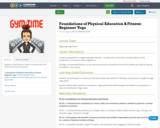
Beginner Yoga Workout
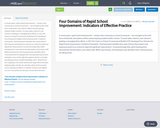
In recent years, rapid school improvement — known most commonly as school turnaround — has emerged as the chief focus of dramatic and systemic efforts aimed at giving students better schools. To assist states, districts, and schools in leading or managing these efforts, in 2017 the Center on School Turnaround at WestEd (CST) developed Four Domains for Rapid School Improvement: A Systems Framework. That framework identifies four areas of focus that research and experience point to as central to rapid and significant improvement: turnaround leadership, talent development, instructional transformation, and culture shift. Within each domain, the framework also identifies three critical practices for taking action.
during needs assessment, indicators serve as the objectives against which to consider prevailing practice (Corbett & Redding, 2017). Results from this mapping in the needs assessment stage inform the plan, helping leaders decide, for example, where to focus initial versus subsequent efforts or whether to focus more tightly on one or two particular domains versus other domains.

Students develop an understanding of the maple syrup process from tapping trees to evaporating sap through hands-on experiences.
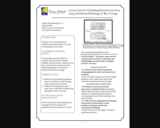
Thank you for choosing the Frances Willard House Museum Lesson Activities Packet for late elementary. Inside you will find six lesson activities. They can be done independently or as a series. Two activities that work well as a set are:
Two Wheels for Change:
Bicycle Technology and Changing America"
A Wheel Within a Wheel
Bicycles and Women's Suffrage.
Historical Markers - Writing About History Using Houses,

This resource has free lesson plans on the digestive system such as organs, functions, and process of digestion. This resource has many materials such as videos, worksheets, activities, and assessments.
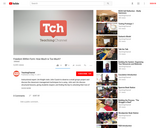
Instructional expert Jim Knight visits John Cusick to observe a small groups project and discuss the classroom management techniques he is using. John and Jim discuss structured lessons, giving students respect, and finding the key to unlocking their love of learning.

How many small squares of chocolate are in a whole Fruit & Nut bar? Through the use of videos, estimation, and discussion, challenge your students to find out!
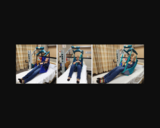
Photo showing a simulated patient in a full-body mechanical lift and mechanical sling.
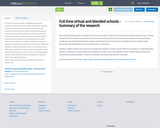
This research brief provides a detailed overview and inventory of full-time virtual schools and blended learning, or hybrid, schools. Full-time virtual schools deliver all curriculum and instruction via the Internet and electronic communication, usually asynchronously with students at home and teachers at a remote location. Blended schools combine virtual instruction with traditional face-to-face instruction in classrooms.
Evidence related to inputs and outcomes indicates that students in these schools differ from students in traditional public schools. In particular, school performance measures for both virtual and blended schools indicate that they are not as successful as traditional public schools. Nevertheless, enrollment growth has continued.
Link to full research brief here: https://nepc.colorado.edu/publication/virtual-schools-annual-2018
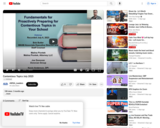
Webinar from the Association of Wisconsin School Administrators (AWSA), July 2023, outlining considerations for district administrators to consider regarding the teaching of potentially contentious topics. AWSA is joined by Bob Butler, the WASB Associate Executive Director, Attorney Malina Piontek, and Joe Donovan from Donovan Group.
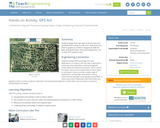
Students design their own logo or picture and use a handheld GPS receiver to map it out. They write out a word or graphic on a field or playground, walk the path, and log GPS data. The results display their "art" on their GPS receiver screen.
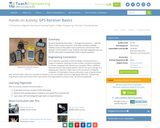
Students familiarize themselves â through trial and error â with the basics of GPS receiver operation. They view a receiver's satellite visibility screen as they walk in various directions and monitor their progress on the receiver's map. Students may enter waypoints and use the GPS information to guide them back to specific locations.
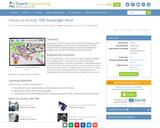
Students go on a GPS scavenger hunt. They use GPS receivers to find designated waypoints and report back on what they found. They compute distances between waypoints based on the latitude and longitude, and compare with the distance the receiver finds.
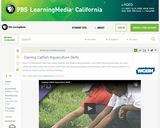
See how Mississippi high school students confront the uncertainty and untidiness of science and develop problem-solving strategies in the context of local catfish farming.
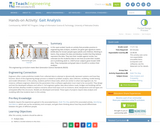
In this open-ended, hands-on activity that provides practice in engineering data analysis, students are given gait signature metric (GSM) data for known people types (adults and children). Working in teams, they analyze the data and develop models that they believe represent the data. They test their models against similar, but unknown (to the students) data to see how accurate their models are in predicting adult vs. child human subjects given known GSM data. They manipulate and graph data in Excel® to conduct their analyses.